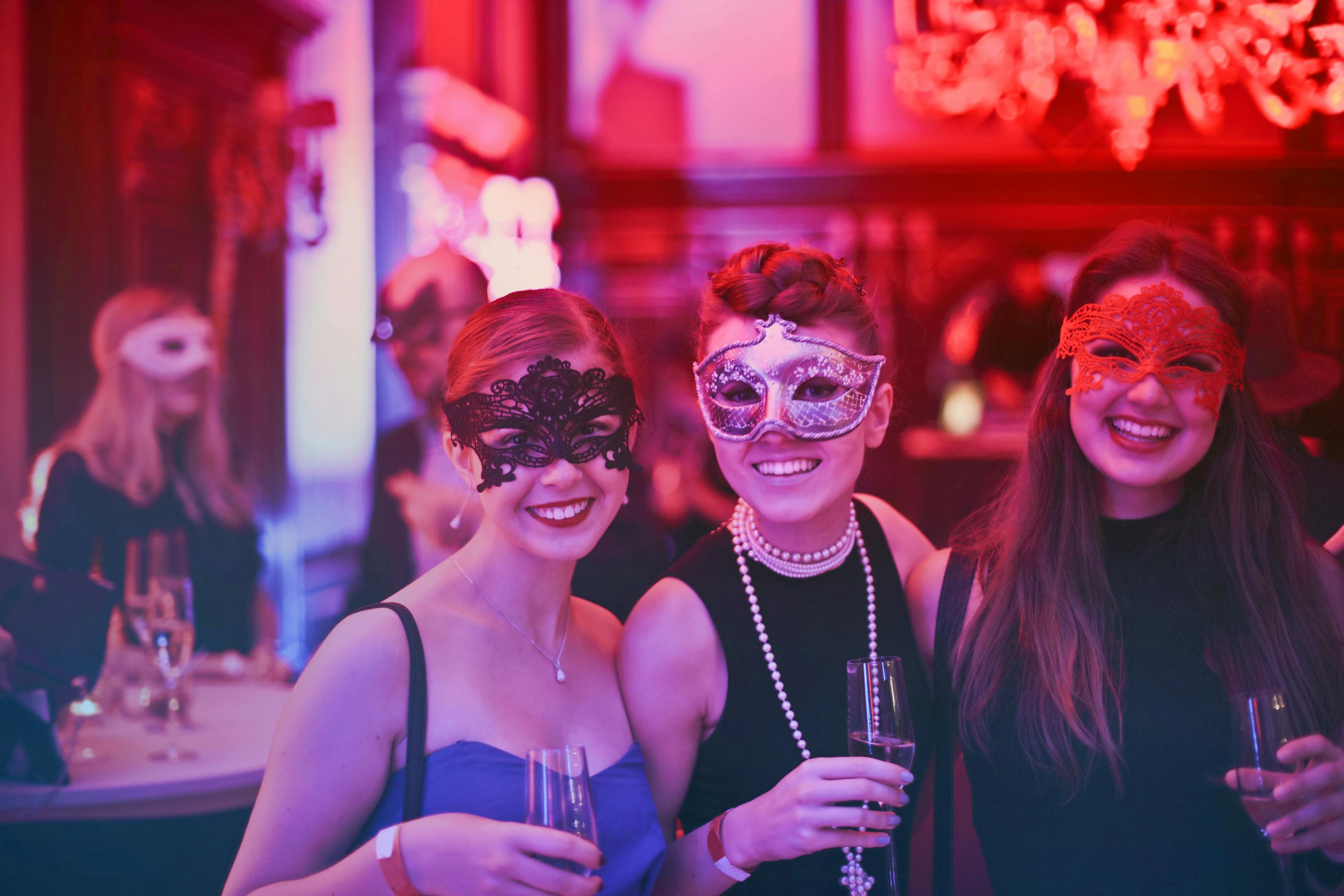Picture this: it's 1960, and you're hiding behind a bush with a massive camera, waiting for Elizabeth Taylor to step out of her hotel. Fast forward to today, and you're listening to a celebrity spill their deepest secrets on a podcast while you're doing dishes. Wild how things change, right? 🎙️
The evolution of celebrity news isn't just about gossip - it's actually shaped how we talk about intimacy, relationships, and yes, even sexual wellness. And tbh, the journey from those sneaky paparazzi shots to today's confessional podcasts tells us everything about our relationship with privacy, vulnerability, and what we're hungry to know about the people we admire.
The Birth of the Paparazzi Era
Let's rewind to where it all started. The term "paparazzi" comes from Federico Fellini's 1960 film "La Dolce Vita," where a pushy photographer named Paparazzo chased celebrities around Rome. Life imitating art much?
But here's what's fascinating - this era coincided with major shifts in how society viewed sexuality and relationships. The 1960s sexual revolution wasn't just happening in bedrooms; it was playing out in celebrity magazines. Suddenly, stars like Brigitte Bardot and Marilyn Monroe weren't just actresses - they became symbols of sexual liberation.
I've always found it interesting how paparazzi culture emerged right when people were becoming more open about desire and intimacy. These photographers weren't just capturing red carpet moments; they were documenting real human vulnerability - stolen kisses, secret affairs, and authentic emotional moments that made celebrities seem more... well, human.
The Princess Diana Effect
Then came Princess Diana, and everything changed. Her relationship with the media was complex - she understood its power but also became its victim. The relentless pursuit that ultimately contributed to her death in 1997 marked a turning point in how we consume celebrity news.
Diana was also revolutionary in how she spoke about mental health, eating disorders, and marital struggles. She broke the royal code of silence and showed vulnerability in ways that paved the path for today's more open conversations about mental wellness and relationship challenges.
The Tabloid Golden Age
The 80s and 90s were peak tabloid madness. Publications like The National Enquirer and People magazine turned celebrity watching into a science. They had sources everywhere, and no topic was off-limits.
This era gave us some wild moments - remember when Madonna's "Sex" book caused international controversy? Or when Hugh Grant's scandal dominated headlines? These weren't just entertainment stories; they were cultural conversations about sexuality, morality, and what we expected from our idols.
What's really interesting is how these publications started normalizing conversations about sex and relationships. Sure, it was often sensationalized, but it got people talking about topics that were previously whispered about behind closed doors.
The Birth of Celebrity Sex Scandals
The tabloid era perfected the art of the celebrity sex scandal. From political figures to movie stars, private intimate moments became public entertainment. While often invasive and harmful, these stories inadvertently opened up broader discussions about sexual health, consent, and relationship dynamics.
I remember reading about how these scandals often led to important conversations about safe sex, particularly during the AIDS crisis. Celebrities like Magic Johnson and Elizabeth Taylor used their platforms to educate about HIV/AIDS, turning personal struggles into public health advocacy.
Digital Revolution: Blogs and Gossip Sites
Then the internet happened, and everything exploded. 💥
Sites like Perez Hilton, TMZ, and Gawker changed the game completely. Suddenly, celebrity news wasn't limited to weekly magazines - it was 24/7, instant, and unfiltered. The barrier between public and private life basically disappeared.
This digital shift coincided with a broader cultural movement toward transparency about sexuality and wellness. Sex and the City was dominating TV, teaching us that women could talk openly about pleasure and desire. Meanwhile, gossip blogs were documenting every celebrity relationship, breakup, and scandal in real-time.
The Rise of Celebrity Sex Tapes
Ngl, the early 2000s gave us the celebrity sex tape phenomenon, which was... a lot. From Paris Hilton to Kim Kardashian, these "leaked" intimate videos became launching pads for entire careers. It was messy, controversial, and completely changed how we think about privacy and sexual agency.
But here's the thing - these incidents also sparked important conversations about consent, revenge porn, and sexual autonomy that we're still having today. They forced us to examine our own voyeuristic tendencies and question what we're really consuming when we engage with this content.
Social Media: Stars Become Their Own Paparazzi
Instagram, Twitter, and TikTok completely flipped the script. Suddenly, celebrities didn't need paparazzi or tabloids - they could share their own stories, their own way.
This shift has been huge for sexual wellness conversations. Stars like Jameela Jamil advocate for body positivity, while others like Chrissy Teigen have opened up about postpartum depression and fertility struggles. The conversation moved from scandal-focused to wellness-focused.
What I love about this era is how it's democratized intimate health discussions. When a celebrity posts about their therapy session or shares their experience with sexual wellness products, it normalizes these conversations for millions of followers.
The Authenticity Factor
Social media promised authenticity, but it also created new forms of performance. The "candid" Instagram post is often as carefully crafted as any magazine spread. But even this curated vulnerability has value - it shows that everyone, even celebrities, deals with relationship issues, body image struggles, and sexual health concerns.
The Podcast Revolution
And now we're in the podcast era, where celebrities sit down for hours-long conversations about their deepest experiences. Shows like "Call Her Daddy," "Armchair Expert," and "WTF with Marc Maron" have created spaces for incredibly intimate discussions.
This format has been revolutionary for sexual wellness conversations. When Gwyneth Paltrow talks about orgasms on a podcast, or when John Mayer discusses his sexual recovery, it reaches audiences in a completely different way than traditional media ever could.
Podcasts feel like eavesdropping on a conversation between friends, which makes even the most personal topics feel approachable and normal. It's brilliant, really.
The Long-Form Intimacy
What makes podcasts special is the time factor. A three-hour conversation allows for nuance, context, and real vulnerability that a tabloid headline never could. Celebrities can share their full stories - the messy, complicated, human parts that make their experiences relatable and educational.
I've noticed how many wellness-focused podcasts now feature celebrities discussing everything from sexual trauma recovery to relationship therapy. It's created this beautiful space where entertainment and education intersect.
The Wellness Integration
Today's celebrity news landscape is deeply intertwined with wellness culture. Stars aren't just sharing gossip - they're sharing their therapists' recommendations, their favorite intimacy products, and their journey toward sexual empowerment.
This shift reflects broader cultural changes. We're more open about mental health, sexual wellness, and relationship struggles than ever before. Celebrity news has evolved from pure entertainment to a form of collective therapy and education.
According to recent research, 73% of millennials and Gen Z consumers trust celebrity wellness recommendations more than traditional advertising. That's significant influence being used to normalize conversations about sexual health, therapy, and self-care.
The Goop Effect
Love it or hate it, Gwyneth Paltrow's Goop empire represents this evolution perfectly. What started as a lifestyle newsletter became a platform for discussing everything from vaginal steaming to sexual wellness products. It's celebrity news meets intimate health education, wrapped in luxury wellness packaging.
This approach has influenced countless other celebrities to launch their own wellness brands and platforms, each contributing to the normalization of previously taboo topics.
Privacy in the Digital Age
One thing that's fascinating about this evolution is how the concept of privacy has completely transformed. What once required sneaky photographers now happens voluntarily through social media posts and podcast confessions.
But this shift has also created new challenges. The pressure to share intimate details for engagement can be overwhelming, and the line between authentic vulnerability and performative transparency isn't always clear.
For sexual wellness specifically, this has created both opportunities and risks. While open conversations about pleasure and health are incredibly valuable, the pressure to share intimate details publicly can also be harmful.
The Future of Celebrity Intimacy
So where are we heading? I think we're moving toward even more integration between celebrity culture and wellness education. Virtual reality experiences, AI-powered wellness recommendations, and interactive platforms are already emerging.
The key is finding balance - maintaining the educational and normalizing benefits of celebrity wellness conversations while protecting genuine privacy and authenticity.
What excites me most is how this evolution has made sexual wellness conversations more accessible. When your favorite celebrity talks openly about therapy, sexual health, or relationship challenges, it gives you permission to have those conversations too.
Frequently Asked Questions
How has celebrity news coverage affected public attitudes toward sexual wellness?
Celebrity openness about sexual health has significantly normalized these conversations. When stars discuss topics like therapy, sexual dysfunction, or pleasure products, it reduces stigma and encourages others to prioritize their own wellness.
What's the difference between paparazzi culture and today's celebrity sharing?
Paparazzi culture was invasive and non-consensual, focusing on scandal and shame. Today's celebrity sharing is largely voluntary and often educational, focusing on wellness, growth, and authentic human experiences.
Are celebrity wellness recommendations trustworthy?
While celebrity endorsements should always be taken with a grain of salt, many stars now work with qualified experts and are more transparent about their partnerships. Always consult healthcare providers for personal wellness decisions.
How do podcasts change celebrity intimacy compared to traditional media?
Podcasts allow for longer, more nuanced conversations that can provide context and depth. This format enables celebrities to share complete stories rather than soundbites, creating more meaningful and educational content.
What role does social media play in celebrity wellness conversations?
Social media has democratized wellness conversations, allowing celebrities to share experiences directly with audiences. It's created communities around previously taboo topics and made sexual wellness discussions more mainstream and accessible.
Bottom Line
The journey from paparazzi to podcasts isn't just about celebrity news - it's about our collective evolution toward openness, vulnerability, and wellness. What started as invasive scandal coverage has transformed into educational, empowering conversations about the most intimate aspects of human experience.
And honestly? I think that's pretty beautiful. We've gone from shaming celebrities for their humanity to celebrating their vulnerability and learning from their experiences. That shift has made all of our conversations about sexuality, relationships, and wellness richer and more honest.
Your pleasure, your wellness, your intimate health - they all matter. And if celebrity culture can help normalize that conversation, then maybe all those years of tabloid drama actually led us somewhere meaningful after all. 💕




